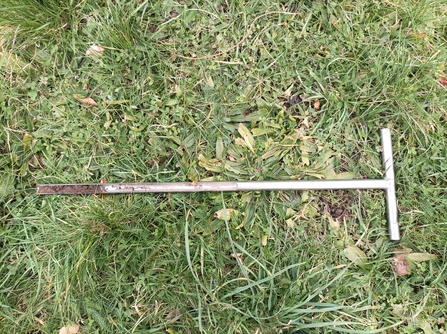Aside from the mud stuck on our boots, few of us probably think about the importance of soil on our nature reserves. In fact, the type and chemistry of the soil is fundamental to the species that can thrive on the site. Understanding things like the soil type, pH and nutrient content can help us understand what is happening on a reserve.
We have a programme of soil chemistry monitoring that compliments all the other survey work we do at the Trust. This involves taking multiple small samples of soil across a site, then combining them for analysis. The tool of choice for this work is actually a cheese auger – similar to the drill-like device used to take samples from wheels of cheese!
Where farmers would use the results of these surveys to assess the need for fertilisers, we are often looking for the opposite reason. Ideally our soils will be low in nutrients, encouraging a variety of plant species, without excessive growth of dense grasses. High levels of phosphates, for example, can lead to a dense sward of grasses that outcompete some of the more desirable plant species. This can often be an issue at sites that are regularly flooded and have poor drainage.
So, the soil chemistry results help us to understand why we have the plant community that we have on a particular site. In some cases, we can then look to improve these conditions – through methods like improving drainage or taking more regular hay cuts.


